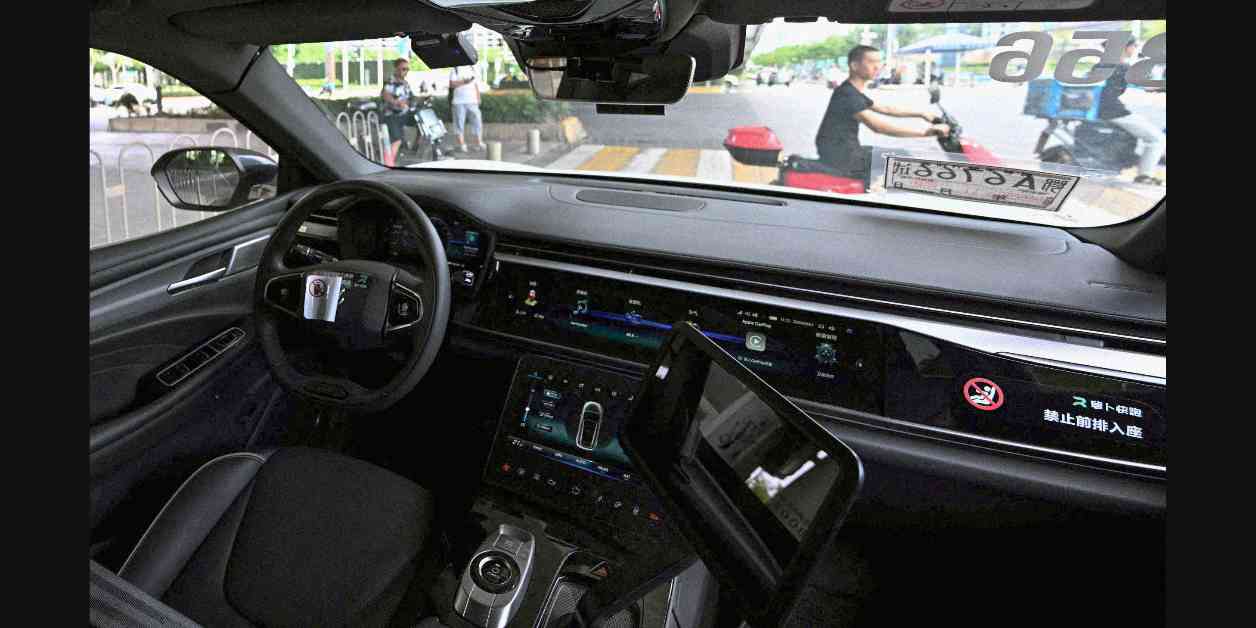Testing China’s Self-Driving Ambitions with Robotaxis in Wuhan
In the bustling city of Wuhan, central China, a unique sight unfolds during rush hour at a busy bus stop. Among the traditional taxis with their glowing “occupied” signs, sleek driverless robotaxis navigate the lanes, topped with spinning laser radar systems. Playfully nicknamed shaoluobo by locals – a portmanteau of Baidu’s robotaxi service, Luobo Kuaipao (Apollo Go in English), and slang from the local dialect – these self-driving taxis are gradually becoming a part of Wuhan’s transportation system.
Integration and Controversies
The introduction of robotaxis in Wuhan is part of a larger effort by Chinese authorities and tech giants to position autonomous vehicles as a key innovation in urban transportation. While some see these self-driving taxis as a step towards safer roads, cheaper rides, and reduced emissions, others have raised concerns about the potential disruptions they bring. From impacting traditional taxi drivers to questioning the readiness of city infrastructure for advanced technology, the rollout of robotaxis has not been without controversy.
With over 400 robotaxis already in operation in Wuhan and plans to reach 1,000 by the end of 2024, Baidu is heavily investing in this service, aiming for profitability in Wuhan by 2025. The popularity of these self-driving taxis, driven by Baidu’s competitive fares, has the company eyeing expansion into other major Chinese cities with the support of local governments.
User Experience and Technical Challenges
Ordering a robotaxi in Wuhan mirrors traditional ride-hailing services, with passengers setting pickup and drop-off locations via a mobile app. However, the experience inside the driverless vehicle is distinct. To unlock the car, passengers input the last four digits of their phone number on a touchscreen, and the journey begins only after everyone is buckled up and the “start” button is pressed.
Inside the robotaxi, a glass barrier separates the rear seats from the front, where a safety operator may sit or supervise remotely. A one-page manual, entirely in Chinese, outlines rules for passengers, including the recording of voices and images during the ride. While the service offers a cool refuge from Wuhan’s summer heat, limitations such as unavailable trunk space and a three-passenger capacity are noted by users.
Technical challenges have surfaced as robotaxis navigate Wuhan’s complex transportation system. Issues like collisions with pedestrians, struggles in persistent rain, and slow responses in heavy traffic have raised concerns about the readiness of self-driving vehicles. Despite advancements, autonomous vehicles still face obstacles in scenarios with sudden obstacles or adverse weather conditions, impacting safe navigation.
Challenges and Future Outlook
The rapid expansion of self-driving cars in Wuhan has sparked uncertainty among traditional taxi drivers, who face new competition from robotaxis. Concerns about liability in accidents involving AI-driven vehicles and the need for comprehensive regulations and insurance policies for autonomous driving have been highlighted by experts.
Despite these challenges, some drivers remain optimistic about the future of autonomous driving. While acknowledging the advantages of human drivers in adapting to road nuances and providing personalized service, they recognize the inevitability of self-driving vehicles as technology progresses. As Wuhan continues to adapt to the influx of robotaxis, the city’s congestion may ease, creating a more conducive environment for the operation of autonomous vehicles.
The road ahead for robotaxis in Wuhan and beyond is paved with technological advancements, regulatory considerations, and societal adaptation. While concerns and complaints persist, the evolution of autonomous driving represents a significant step in technological and social progress that cannot be ignored. As Wuhan embraces the integration of robotaxis into its transportation system, the city is poised to lead China’s self-driving ambitions into the future.









![Indie music fans gather at l’Antipode for [Face B] Kool Things soirée on Saturday night news-15112024-105933](https://shanghainewstv.com/wp-content/uploads/2024/11/news-15112024-105933-218x150.jpg)







